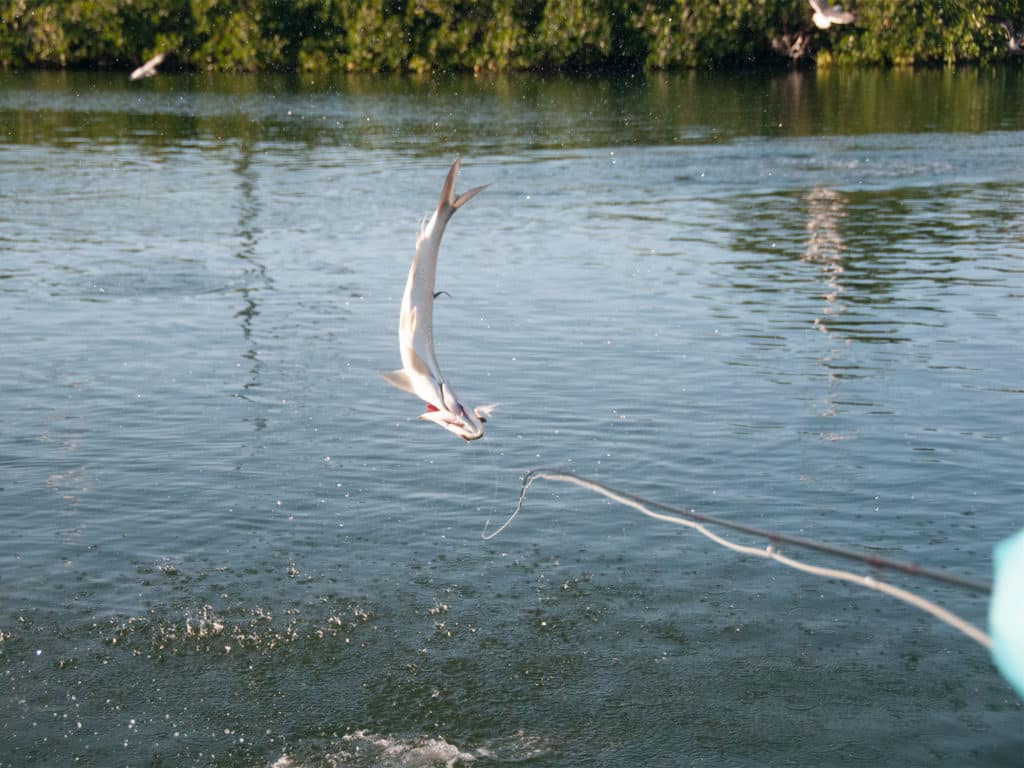
While a few basic, impressionistic fly patterns sufficed in the old days, saltwater fly tying has evolved at a fever pitch since the 1980s, when the variety and availability of materials really took off. Now, incredibly realistic and innovative patterns outnumber the old classics, but some of them remain extremely effective and don’t take much time to tie.
For fly-fishing guides, who can’t devote countless hours to tying a handful of flies for every fishing trip, simple flies are the order of the day. Here are some of those time-proven crustacean and baitfish imitations that qualify as “guide flies,” a term that refers to flies you can whip up in a jiffy and the pros rely on to produce fish for their anglers.
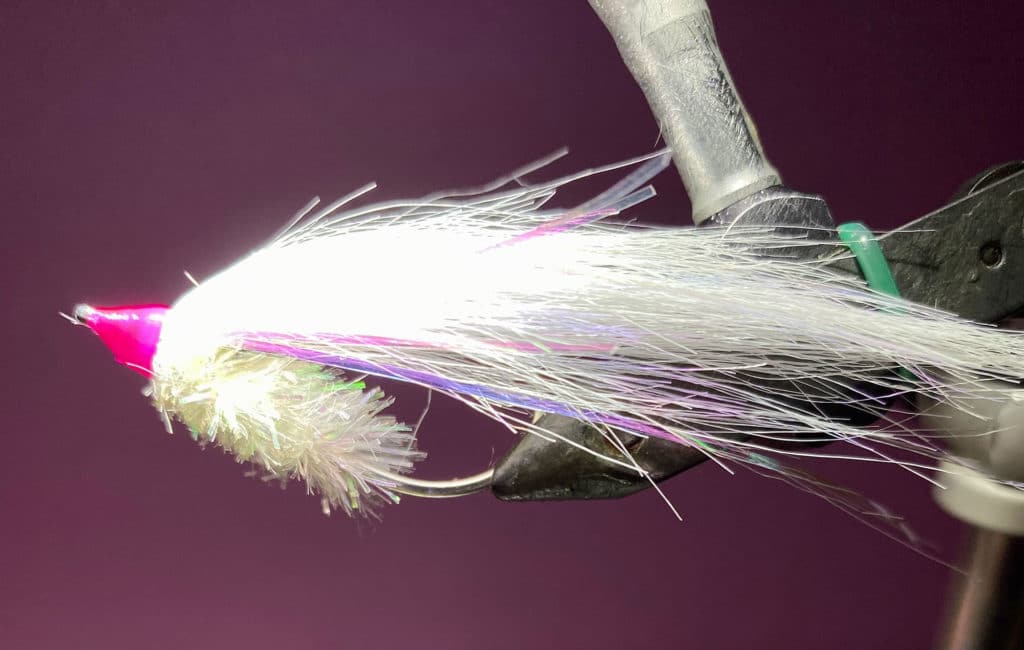
Simple Streamer
A red-hot Spanish mackerel bite in the late 80s prompted me to come up with this pattern. After losing more than two dozen flies in a single day, some cut off, others striped practically bare of their dressing by the sharp dentures of the aggressive mackerel, I was forced to quickly replenish my streamer box to get back into the fray before the action shut off.
I tied some of these Bendback style due to the numerous blades of grass commonly found floating in Florida Bay, where we were fishing. I gathered a bunch of 1/0 Mustad 3407 hooks, a hank of white Fishair (there are better alternatives now), flashy chenille and a bundle of pearl Flashabou. I loaded my bobbin with red monocore thread and away I went. After the cemented thread heads had dried, I used white and black model paint to add eyes, though this fly would surely be just as deadly without them. Lately I’ve resorted to hot glue to add stick-on eyes to the pattern. It took me less than 90 minutes to reload my box to get back into the fray. The Simple Streamer later proved effective on baby tarpon, seatrout over grass, snook in the backcountry and the surf, and more.
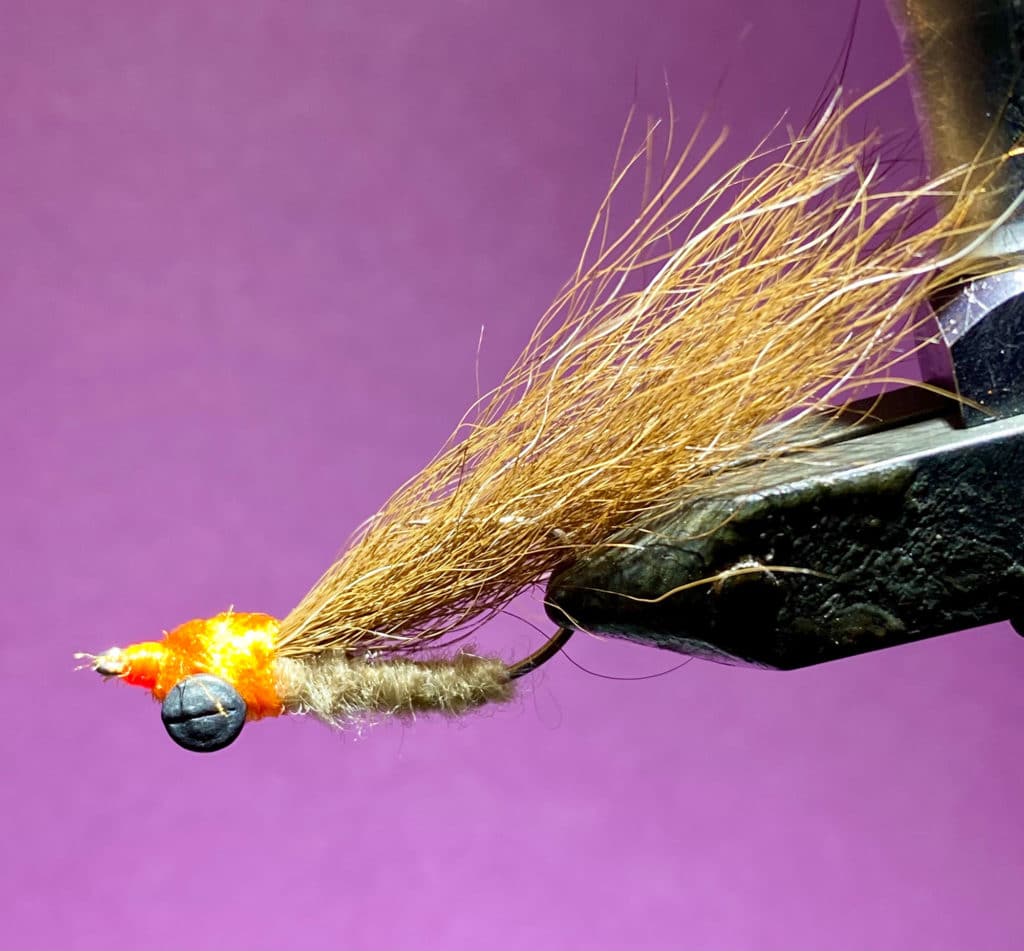
Mitch Howe
Named after its originator, an accomplished South Florida fly fisher, this simplistic bonefish pattern has accounted for countless fish over the years. It’s a variation of the Horror, a classic credited to the late Pete Perinchief, and I was introduced to it by a fly-fishing buddy who handed me one out of the blue and said, “This is a Mitch Howe, I need two dozen before the weekend.”
It is as basic as the famed Snapping Shrimp and similarly sports a tan yarn body and a natural wing of fine bucktail or similar hair. The Snapping Shrimp has a ball of bright-orange yarn tied in at the hook bend (to suggest an orange claw), whereas the Howe has an orange head fashioned with yarn or fine chenille tied just behind the hook eye, with small bead-chain or X-small lead dumbbell eyes added for a faster sink rate.
After delivering his order, I fished this fly with my buddy that very week, landing 7 bones between us. I’ve been sold on the pattern ever since, and have used it successfully on my own in many occasions.
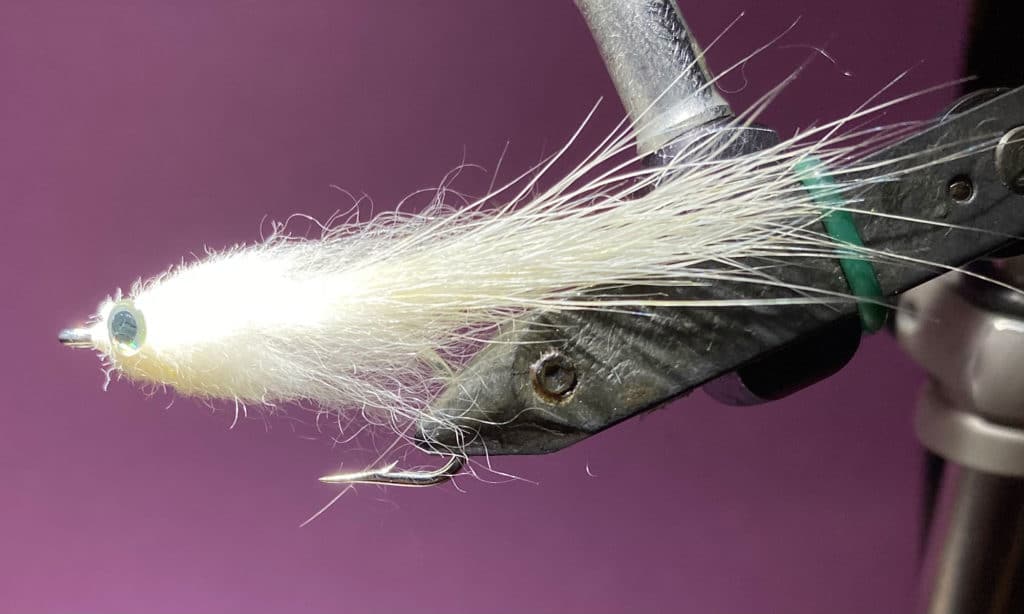
Dock Lint
Snook around dock lights are rarely fussy eaters. That is, until they get fished pretty hard. I tie a few pretty realistic minnows on No. 4 and 6 hooks, but while the fish are easy to feed, I throw together a simple little affair that a former charter client jokingly called Lint due its sparse, single-material construction.
An array of synthetic fibers can be used to tie this fly now, so I’ve switched from natural wool to white Puglisi fibers, which I tie in a 1-inch tapered tail, adding a few strands of fine flash, and then building up the head a bit by tying in a heavier tuft of the material. You can add different types of eyes, though I often just dot an eye on the head with a black Sharpie. The minnow version is all white, but I’ll opt for tan or olive green to suggest a shrimp.
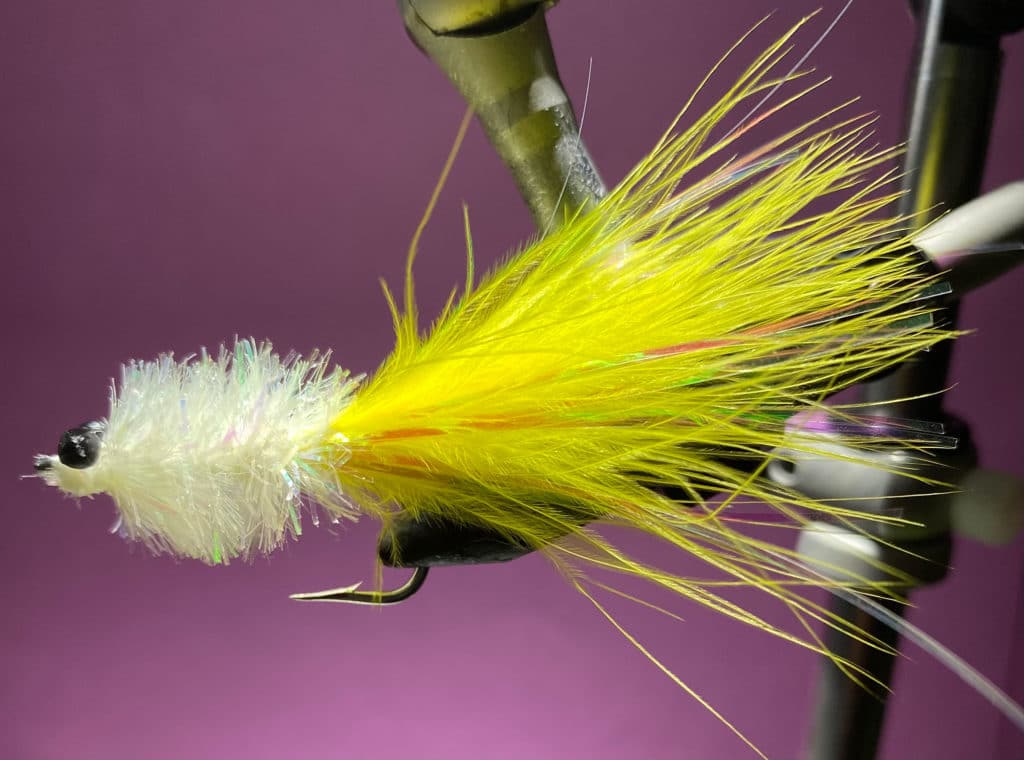
Blossom
This one was credited to fly-fishing pioneer Mark Sosin in the 1970s but has been renamed in some circles. Like many flies, it has been tweaked a lot, yet it remains an impressionistic pattern that fish mistake for a shrimp, minnow or some other morsel. A marabou tail, a head of wound chenille (flash or non-flash) or similar body material, and in some cases, small lead, bead-chain or black mono eye complete the pattern. It takes only minutes to tie and is effective in the surf, under dock lights, and other places. Tie it in any color you wish, on hook sizes 6 through 2. The popular Norm’s Shminnow is actually a descendant of the Blossom.
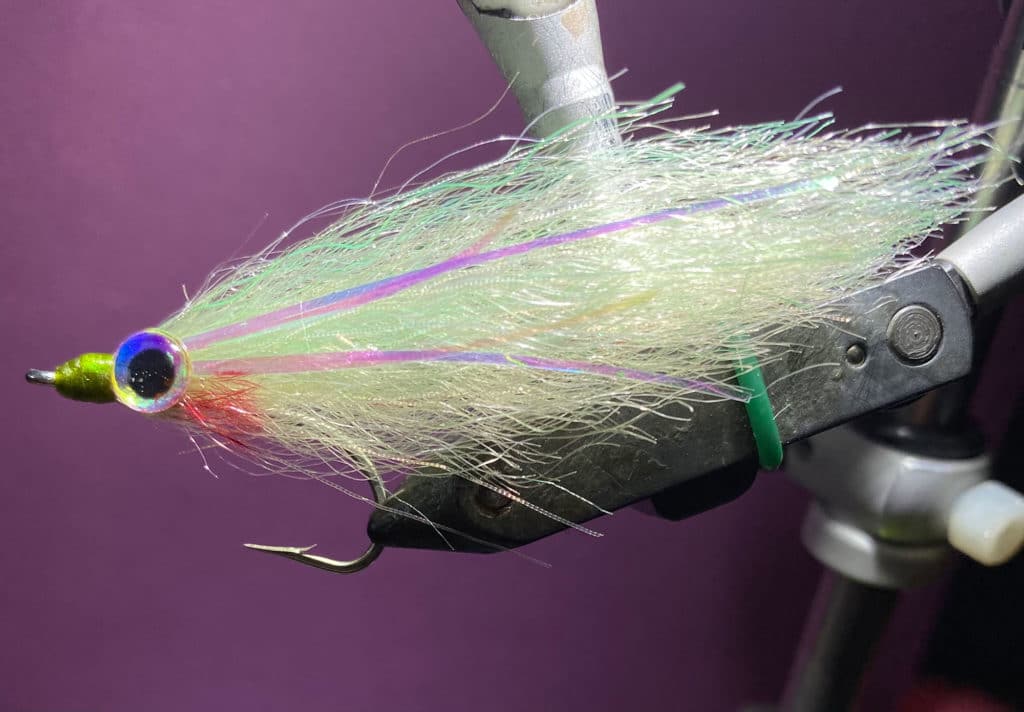
Flasher
One wing material (SF Flash Blend), thread, hot glue and decal eyes. That’s all you need to turn out this simple, flashy baitfish pattern. I can knock out a dozen of these in under an hour. It’s super durable and really stands out in stained or muddy. I tie it small and sparse on No. 4 and 2 hooks for dock snook and trout, but when fishing the bridges or targeting Spanish mackerel or snook in the surf, I upsize the streamer and tie it on a No. 1/0 hook.
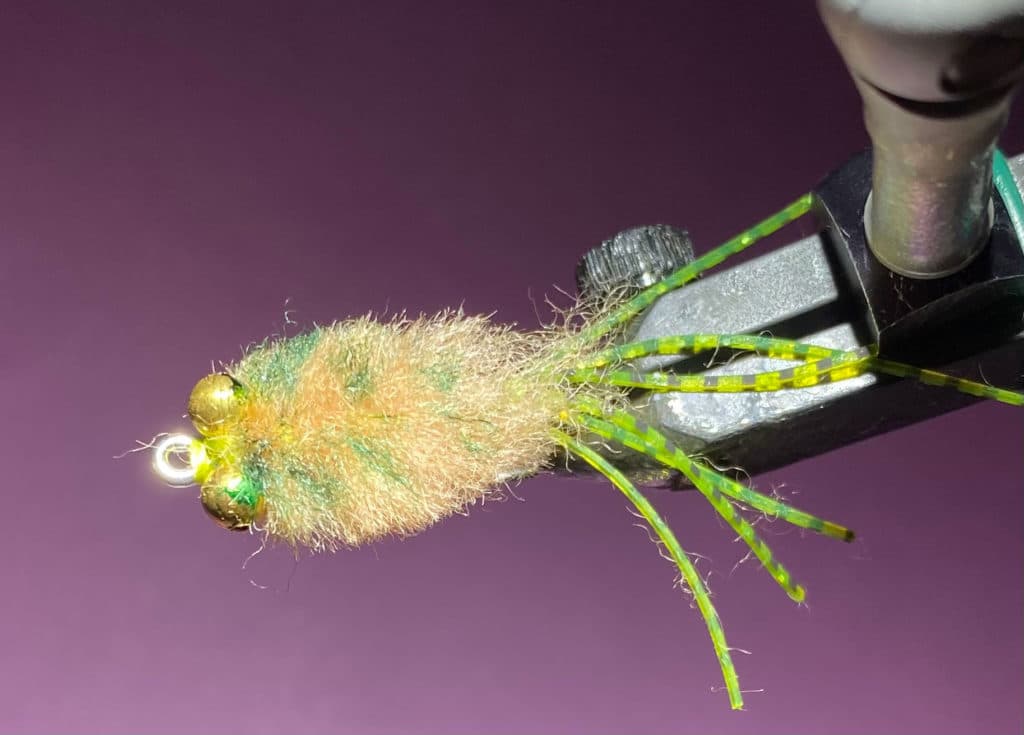
Quickie Crab
It was a month-long summer swarm of persnickety redfish tailing and crawling in barely a foot of water that made me come up with this small, impressionistic crab. No perfect claws or taxidermy eyes—just the right shape and, most importantly, the right size. We could only convince a couple of 5-pounders to eat our streamers when we first encountered the reds, but one of them upchucked a half-dozen button-sized crabs on the gunwale, and we knew we had broken the code.
I had nothing as small as the crabs the reds were feasting on that day, so I tied two dozen of these Quickie Crabs when I got home, all on a No. 4 Mustad 34007 hook with olive green or tan wool bodies clipped flat on a horizontal plane. The legs are four or five rubber hackles, about an inch long, splayed out a bit at the hook bend. And since the fish we encountered were so shallow that their backs were often out of the water, no added weight was needed to complete this crab pattern.
We returned to that hot flat three days later to find those reds again on the low end of the tide, and never had a refusal. All tallied, we landed over 30 of the reds, plus a bonus black drum and three trout. This small and lightweight fly lands quietly, so it’s best to stick it right on a fish’s nose for an immediate reaction. The pattern takes 5 minutes to tie once you get in the groove.









